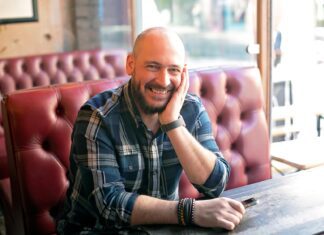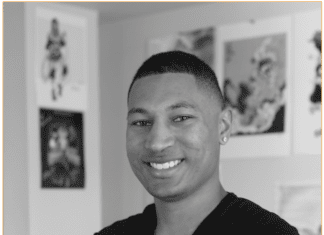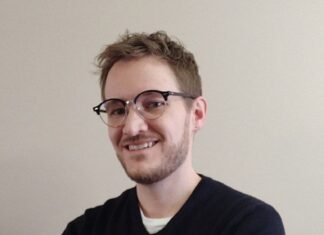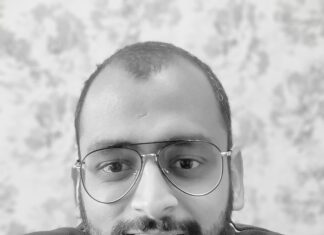Q: What is/are your specialist tech area(s)?
Christine: Wearables, Interaction Design, Arduino, ESP32, IoT
Q: How did you become an author for Packt? Tell us about your journey. What was your motivation for writing this book?
Christine: My motivation for writing this book was because there weren’t current books on making and understanding wearable technology. This is an important and valuable field that is growing fast and I want to help people learn how to get up and running with making effective and useful wearables. There is a Design Innovation process in the book because it’s important to design with and for people, to be able to help in their daily lives. This is an essential part of informed wearables. They can also be fun and flippant though – this helps with mental health and wellbeing too! I also teach in this and a related field, and there were very few books I could use for education, so I wanted to help create a resource that is useful for education providers too.
Q: What kind of research did you do, and how long did you spend researching before beginning the book?
Christine: Lots of research before, during and still now, this will never stop and that’s what’s exciting about this field. I’ve always been using Arduino systems, and applying them in a wearable context is fascinating. I’ve research other wearables in the field, how we can make them accessible to others, and what is new and innovative. There’s also huge amounts of research into the technologies, microprocessor boards, and sensors too. Looking at features and configurations for microprocessors for what is most useful in this field was important.
Q: Did you face any challenges during the writing process? How did you overcome them?
Christine: Some challenges will always exist when writing a book that is so practical in nature. I had code going wrong or components not working how they should or as described so circuits had to be reconfigured, remade, or projects swapped out to be sure that what is in the book, can be made by everyone who follows the tutorials. Being adaptable is an important skill to have when writing this type of book, some of the services I was using, for example, were upgraded, so I had to rewrite to reflect new interfaces or functions. You need to take these things in your stride though, ultimately the goal is to write the best book possible for the reader.
Q: What’s your take on the technologies discussed in the book? Where do you see these technologies heading in the future?
Christine: These technologies are often getting smaller and more affordable which is fantastic for us all. The use of Wi-Fi on many of the microcontroller boards opens a whole new level of interaction to our wearables. Before the ESP32 hit our desks, we were using cumbersome, large, inaccessible ways to add Wi-Fi to a project. I think these technologies may become feature focused, so maybe smaller with only Bluetooth, or only W-Fi as needed, so they may cost even less and use the features we need. I’m seeing some with better battery management too which is a really good step forward.
Q: Why should readers choose this book over others already on the market? How would you differentiate your book from its competition?
Christine: This book covers the basics to get you up and running if you have never made a wearable or soft circuit before. You can just jump straight in! Also, it’s all about the thought and planning behind making a wearable with purpose. I think current society and community plays an essential role in our lives, and we are more mindful of others, so the book has a focus on designing a wearable mindful of environment, people, and purposes. There are also some super fun projects to make and wear!
Q: What are the key takeaways you want readers to come away with from the book?
Christine: The takeaways would be that often the hardest part of learning something new, is to get started. This book helps you to do just that – a step by step approach to get started and have fun in the process. We work up to more complex wearables but you are encouraged to keep making in your time, practice, and plan for the wearable you want to make. It will give them a lot of tips and tricks I’ve learnt along the way. I wish I had learnt from a book like this.
Q. What advice would you give to readers learning tech? Do you have any top tips?
Christine: Just do it! Get stuck in and practice. Things will go wrong, break, or not work as expected, but when it works, it’s magical! You can do it, and you don’t have to rush, work at your own speed, we all learn at a different pace and that’s ok. Make projects you love and want to use, and the motivation is there. Be invested, challenge yourself.
Q. Do you have a blog that readers can follow?
Christine: Yes! www.christinefarion.com for all my new circuits that you can follow along with after making the ones in the book. You can contact me there too.
Q. Can you share any blogs, websites, and forums to help readers gain a holistic view of the tech they are learning?
Christine: https://forum.arduino.cc/ and https://forums.adafruit.com/ are my favorites and www.tinkertailor.tech has all the items needed to create wearables, including conductive fabrics, sewing items, tools, electronics and circuit boards.
Q. How would you describe your author journey with Packt? Would you recommend Packt to aspiring authors?
Christine: Yes! It’s been a huge learning curve, and I’ve found my own skills have also improved too. They support and encourage you and offer valuable suggestions. There are tight deadlines to follow but that is to be expected and helps to keep you on track, but it’s an experience I’m glad I’ve done.
Q. What are your favorite tech journals? How do you keep yourself up to date on tech?
Christine: So many,
https://interestingengineering.com/
https://www.bbc.co.uk/news/technology
http://verge.com/
https://www.dezeen.com/technology/
https://www.hackster.io/wearables/projects
Q. How did you organize, plan, and prioritize your work and write the book?
Christine: I used a program called Scrivner to map out the book. It’s really useful because you can build it up from notes and collected links and resources. So it’s a great way to do all your research and have a place to document it as you build up the chapters. I would do it that way if I wrote a book again because it’s so easy to lose references and information, or what your planning, It’s a great way to keep it all together. You can prioritize, add tags, and change the icons of the parts you’re working on. I planned the circuits ahead, and then worked out sessions when I would write up information around the practical activity, then try to save a large amount of time to photograph and build the circuit. It was pretty involved writing such a practical book.
Q. What is that one writing tip that you found most crucial and would like to share with aspiring authors?
Christine: A writing tip would be to try to do something every day, even if it’s 15 minutes. These small amounts of time all add up and then when you come to sit and write the chapter, you’ll already have a huge base of notes, thoughts, and starting paragraphs.
Q. Would you like to share your social handles? If so, please share.
Christine: @cmoz on Twitter and Instagram!
You can find Christine’s book on Amazon by following this link: Please click here








